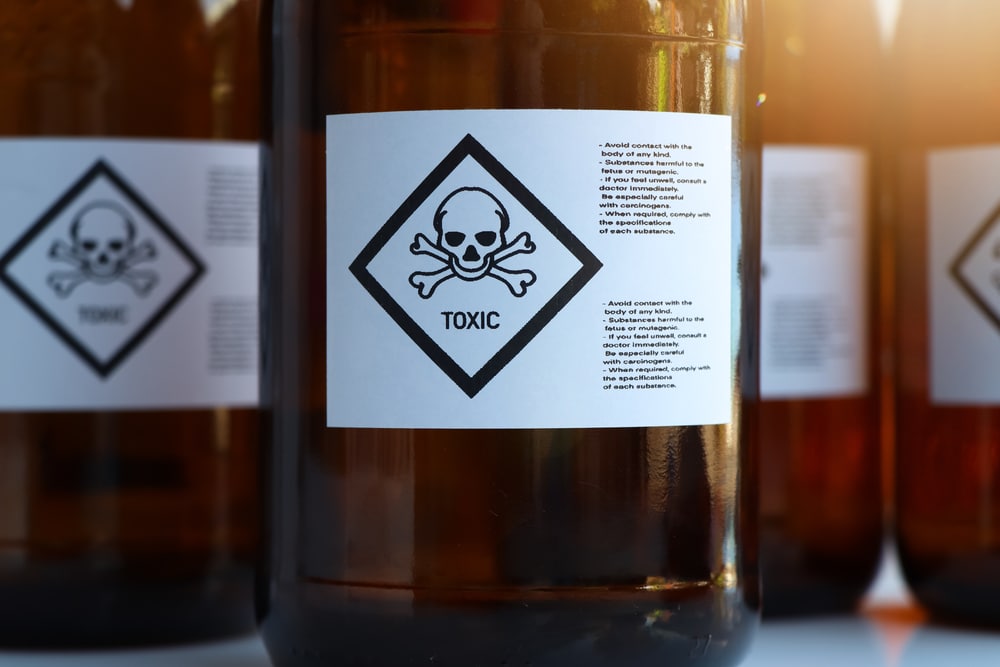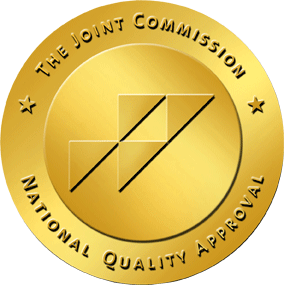Facts About Meth
Meth tears apart the lives of users and their loved ones. It’s a highly addictive drug that changes your brain and hijacks your life. Around 23,827 people died from a drug overdose involving psychostimulants like meth in 2020. This doesn’t even consider the physical and mental long-term effects of the drug that can fuel life-threatening conditions and psychological disorders.
What Is Meth?
Methamphetamine (meth) is a stimulant drug. It comes in crystalline powder forms and chunky glass-like forms. Some people liquify it for transporting, injecting, or swallowing. This is known as liquid meth.
Forms of methamphetamine are sometimes prescribed to treat ADHD or severe obesity. Meth works by speeding up processes in your central nervous system that decreases your appetite and increases:
- Alertness
- Physical activity
- Wakefulness
People who abuse methamphetamine do so for its pleasurable effects. Meth tells your brain to release large amounts of dopamine. That’s why meth makes people feel euphoric and alert.
What Is Crystal Meth?
Crystal methamphetamine is an illegal drug made from meth. This form of meth is created by using chemicals to change the molecules of meth. The result is a chunky crystal-like substance.
Crystal meth is often made from potentially dangerous substances like:
- Pseudoephedrine (the major ingredient in over-the-counter cold remedies)
- Red phosphorous
- Iodine
- Ammonia
- Paint thinner
- Ether
- Anti-freeze
- Drain cleaner
- Battery acid
Many methamphetamine users prefer crystal meth because it provides a faster, longer high.
Brief History of Meth
Desoxyn® is the brand name of meth that is approved for limited medical uses by the FDA. According to the National Institute on Drug Abuse, methamphetamine was created around the early 20th century. It was derived from amphetamine and was an ingredient in inhalers for respiratory problems and decongestants. It was also used to treat narcolepsy and obesity. Soldiers sometimes took meth at wartime to stay up for long hours during combat.
The abuse of meth began picking up speed in the 1950s and 1960s when prescriptions were readily distributed for obesity and mood disorders. In 1970, meth was classified as a Schedule II drug by the Drug Enforcement Administration (DEA). Crystal meth is an illicit drug made from meth by adding chemicals to it.
A large quantity of meth is made in Mexican labs and smuggled into the U.S. Smaller, local productions of meth can be found across the country in apartments, kitchens, and trailers. This is where one of meth’s street names “stove top” came from. According to the National Survey on Drug Use and Health, around 2.6 million people over age 12 used meth in 2020.
Why Is Methamphetamine Addictive?
Meth is very addictive. Some meth users say they became addicted after the first time they used it. Meth floods the brain with extremely high amounts of dopamine. This creates an intense feeling of euphoria. People with a methamphetamine addiction want to achieve that high again and again.
Over time, the euphoria from a meth high becomes harder to obtain. You need more meth to get the same effects. At the same time, meth is depleting your brain of dopamine because it’s telling your central nervous system to release excessive amounts of this important neurotransmitter. Your brain begins relying on meth to function. It can’t produce the necessary amounts of dopamine on its own. When this happens, you begin experiencing meth withdrawal symptomswhen you go without meth. Abusing meth becomes a way to keep withdrawal at bay. You’re now psychologically and physically dependent on meth, which fuels the cycle of drug addiction.
How Do You Take Meth?
What Happens When You Mix Meth With Alcohol?
Many meth users abuse alcoholor other drugs as well. Meth and alcohol produce different effects when used together rather than on their own. For instance, you may experience dangerous effects like large spikes in heart rate when you mix meth and alcohol.
Meth sometimes makes alcohol feel less sedating. On the other hand, alcohol can take the edge off some of the stimulant properties of meth. Because meth can mask some of the feelings you typically get when drinking, you may drink dangerous amounts of alcohol, putting you at risk for alcohol poisoning.
What Are Other Names for Meth?
The DEA has foundthat meth goes by several street names. These include:
- Crystal meth
- Crystal
- Poor Man’s Cocaine
- Speed
- Glass
- Uppers
- Shards
- Tweak
- Bikers Coffee
- Ice
- Yellow Bam
- Chalk
- Black Beauties
- Shabu
- Crank
- Yaba
- Stove Top
- Trash
- Tina
What Does Meth Feel Like?
Some people describe a meth high as the best they’ve ever felt. Smoking or injecting meth can cause what’s known as a rush. This effect of methamphetamine is an “on-top-of-the-world” feeling and extreme euphoria. That’s followed by short-term effects of methlike:
- Feelings of pleasure
- Extreme self-confidence
- Talkativeness
- Decreased need for food and sleep
In contrast, coming down from meth is extremely unpleasant. As the drug leaves your bodyand your neurotransmitters try to rebalance themselves, you may experience:
- Depression
- Meth cravings
- Anxiety
- Paranoia
- Suicidal thoughts
- Hallucinations
- Muscle aches and pains
- Increased blood pressure
- Inability to sleep
How Long Does Meth Stay in Your System?
- The amount of meth you use
- Your physical makeup
- How long you’ve been using meth
- Blood: up to 3 days
- Saliva: up to 2 days
- Hair: up to 90 days
- Urine test: 2 to 5 days
What Does Crystal Meth Look Like?
Methamphetamine looks different depending on the form. Meth comes in a crystalline powder form. It can be similar in appearance and texture to cocaine and is snorted or dissolved in water for drinking or injecting. Meth powder comes in shades of white, off-white, pinkish, or light yellow. The color of meth depends on how it’s cooked and the chemicals and solvents added to it.
Crystal meth is a rock-like form of the drug. It can look like ice crystals or shards of glass. Sometimes crystal meth has a white or blue appearance. Crystal meth is what is left after liquids evaporate from meth powder. The color of crystal meth is typically white, clear, or blue. Liquid meth is often yellow or clear.
What Does Meth Smell Like?
The smell of meth is odorless unless it’s been mixed or dissolved with another substance. Meth sometimes smells like sulfur, cat urine, cleaning products, or acetone. When crystal meth is smoked, it can take on the smell of burnt plastic or a sweet smell like that of burnt sugar or marshmallows.
What Does Meth Taste Like?
Users report that meth often has a bitter taste. It can take on the taste of its smell. For instance, if created with acetone, it may taste like chemicals.

What Is Meth Psychosis?
Abusing meth increases the risk of meth psychosis. About 40% of meth abusers experience meth psychosis. Meth psychosis can include:
- Seeing and hearing things that aren’t there
- Intense anxiety and paranoia
- Depression
- Suicidal thoughts
- Hyperactivity
- Violent behavior
- Not making sense when speaking
What Is Meth Withdrawal Like?
The physical symptomsof meth withdrawal are not as painful as drugs like heroin or alcohol. However, psychological meth withdrawal symptoms can get pretty debilitating. Meth withdrawal symptomsaffect people differently and depend on how long you’ve been abusing the drug and your physical makeup. They may include:
- Sweating
- Shaking
- Headaches
- Fast heartbeat
- Restlessness
- Delusions
- Agitation
- Anxiety
- Severe depression
- Mood swings
- Suicidal thoughts
- Insomnia
- Extreme fatigue
Drug detox and alcohol detox should never be attempted without medical help. Quitting substances cold turkey can lead to painful and sometimes dangerous withdrawal symptoms. It also puts you at increased risk for relapse because the temptation to use drugs to alleviate withdrawal can be overwhelming. Detoxingin a medical facility or drug rehab ensures you have 24/7 care from treatment staff who can ease withdrawal symptoms, keep you safe, and prevent relapse.
Physical Signs of Meth Addiction
Meth abuse begins affecting your physical appearance. Many of the effects of meth are due to the way the drug changes your priorities. When you’re addicted, meth becomes your central focus in life. You’re not concerned with personal hygiene, nutrition, or other factors that affect your health and appearance. Methamphetamine abusers often have these characteristics:
- Severe dental problems (meth mouth)
- Thin or underweight due to decreased appetite
- Acne
- Burns or other skin sores on face or hands from smoking meth
- Fidgety, picking at their hair and skin
- Dilated pupils
- Twitching
- Wearing heavy clothing when it’s warm (meth can lower your body temperature)
- Looking disheveled (i.e., wearing dirty or baggy clothing)
Am I Addicted to Meth?
An addiction to meth looks much like an addiction to other drugs and alcohol. Your life revolves around getting and using meth, and you continue using the drug despite negative consequences to your health and relationships. If you’re using meth other than for one of the rare medical circumstances for which it’s prescribed, you should get help. Meth is a dangerous drug that can cause long-term consequences.
Warning signs of crystal meth addiction include:
- Needing increasing amounts of meth to get “the high” you desire.
- Inability to decrease or quit meth use.
- Problems at work or school because of meth abuse.
- Abusing meth with other drugs or alcohol.
- Legal, financial, or relationship problems because of meth abuse.
- Negative physical or mental health effects due to meth use.
- Weight loss and neglecting personal hygiene.
- Experiencing drug withdrawal symptoms when you stop taking meth.
- Continuing to use meth despite negative consequences.
Meth Addiction Treatment
Many people who are addicted to drugs and alcohol do best in residential treatment where they live at the treatment center and have space away from triggers and substances. There are also outpatient crystal meth addiction programs that can be effective for those with a very supportive home life or who live in a sober living residence.
If you’re looking for an addiction treatment program, we can help. Vogue Recovery Centers are accredited and provide evidence-based substance abuse and mental health treatment. We use a blend of traditional and holistic approaches that help you heal wholly. Some features of drug and alcohol rehab at Vogue include:
- Highly credentialed behavioral health care experts
- Dual diagnosis treatment
- Medical detox
- Levels of care that include inpatientand outpatientprograms
- Individual therapy and group counseling
- Traditional approaches like cognitive behavioral therapy, dialectical behavior therapy, and motivational interviewing
- Alternative approaches like yoga, nutrition counseling, EMDR, and art therapy
- Medication-assisted treatment(MAT)
- Aftercare and alumni program
We’re here around the clock. Call us for a free, confidential consultation now.
References
- https://nida.nih.gov/publications/research-reports/methamphetamine/what-methamphetamine
- https://www.dea.gov/drug-scheduling
- https://www.ncbi.nlm.nih.gov/pmc/articles/PMC4157644/
- https://www.dea.gov/sites/default/files/2020-06/Methamphetamine-2020_0.pdf
- https://www.drugabuse.gov/publications/methamphetamine/what-are-immediate-short-term-effects-methamphetamine-misuse
- https://www.ncbi.nlm.nih.gov/pmc/articles/PMC4920965/
- https://www.ncbi.nlm.nih.gov/pmc/articles/PMC5027896/
- https://www.justice.gov/archive/ndic/pubs5/5049/5049p.pdf
- https://nida.nih.gov/publications/research-reports/methamphetamine/how-methamphetamine-misused
- https://nida.nih.gov/publications/research-reports/methamphetamine/what-methamphetamine
- https://www.samhsa.gov/data/release/2020-national-survey-drug-use-and-health-nsduh-releases
- https://www.ncbi.nlm.nih.gov/pmc/articles/PMC3071736/
- https://nida.nih.gov/drug-topics/trends-statistics/overdose-death-rates


